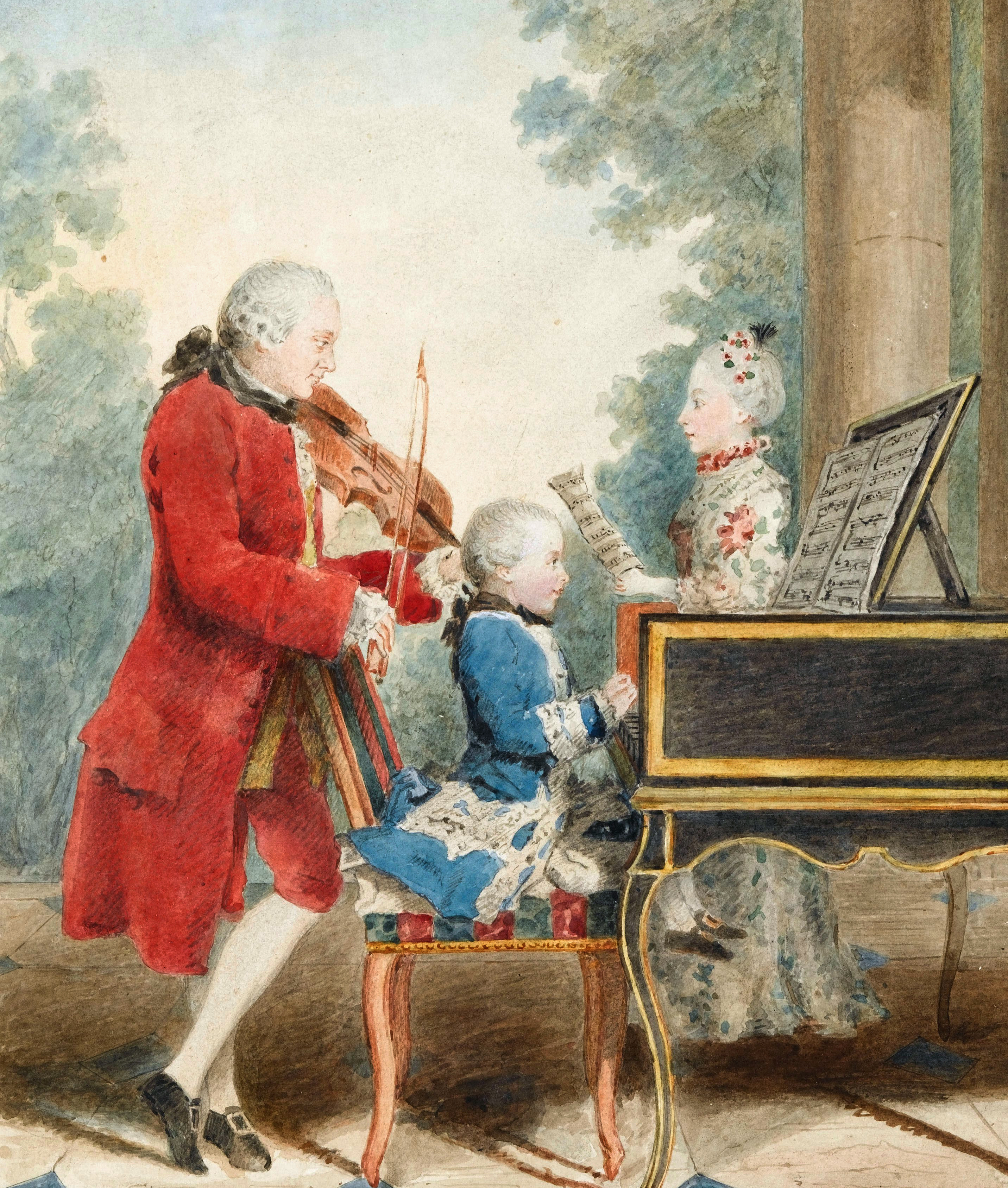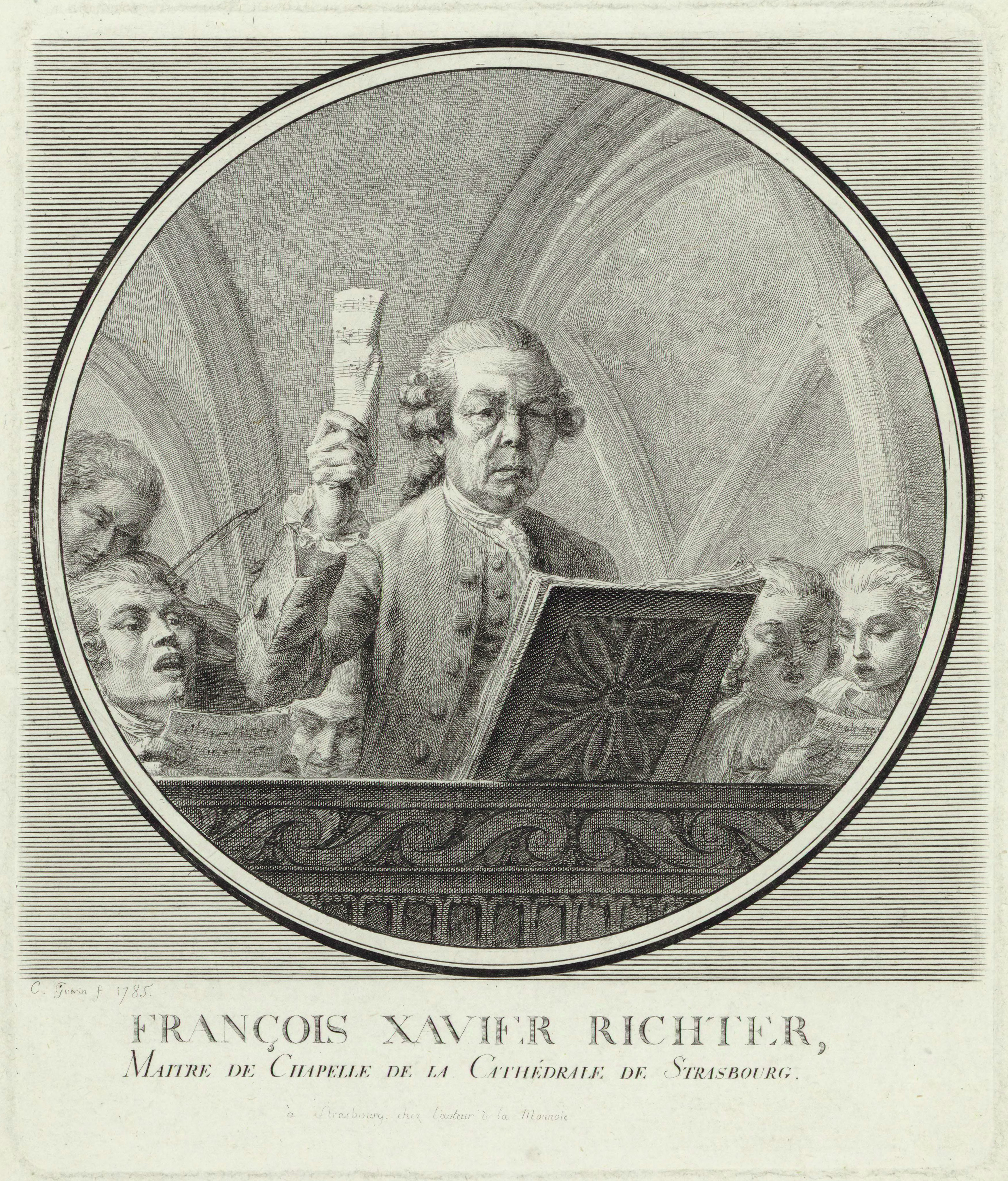|
Ignaz Pleyel
Ignaz (Ignace) Joseph Pleyel (; ; 18 June 1757 – 14 November 1831) was an Austrian composer, music publisher and piano builder of the Classical period. He grew up in Austria (then part of the Holy Roman Empire), and was educated there; in his mid-twenties he moved to France, and was based in France for the rest of his life. Life Early years He was born in in Lower Austria, the son of a schoolmaster named Martin Pleyl. Despite the fact that some sources claim that he had 37 siblings, he was the eighth and last child of his father's first marriage to Anna Theresia née Forster and he had eight more half siblings from his father's second marriage to Maria Anna née Placho. While still young, he probably studied with Johann Baptist Wanhal, and from 1772 he became the pupil of Joseph Haydn in Eisenstadt. As with Beethoven, born 13 years later, Pleyel benefited in his study from the sponsorship of aristocracy, in this case Count Ladislaus Erdődy (1746–1786). Pleyel evidently had ... [...More Info...] [...Related Items...] OR: [Wikipedia] [Google] [Baidu] |
Classical Period (music)
The Classical period was an era of classical music between roughly 1750 and 1820. The classical period falls between the Baroque music, Baroque and Romantic music, Romantic periods. It is mainly Homophony, homophonic, using a clear melody line over a subordinate chordal accompaniment,Friedrich Blume, Blume, Friedrich. ''Classic and Romantic Music: A Comprehensive Survey''. New York: W. W. Norton, 1970 but counterpoint was by no means forgotten, especially in liturgical vocal music and, later in the period, secular instrumental music. It also makes use of ''Galant music, style galant'' which emphasizes light elegance in place of the Baroque's dignified seriousness and impressive grandeur. Variety and contrast within a piece became more pronounced than before, and the orchestra increased in size, range, and power. The harpsichord declined as the main keyboard instrument and superseded by the piano (or fortepiano). Unlike the harpsichord, which plucks strings with quills, pianos s ... [...More Info...] [...Related Items...] OR: [Wikipedia] [Google] [Baidu] |
Franz Xaver Richter
Franz ( Czech: František) Xaver Richter, known as ''François Xavier Richter'' in France (December 1, 1709 – September 12, 1789) was an Austro-Moravian singer, violinist, composer, conductor and music theoretician who spent most of his life first in Austria and later in Mannheim and in Strasbourg, where he was music director of the cathedral. From 1783 on, Haydn's favourite pupil, Ignaz Pleyel, was his deputy director. The most traditional of the first-generation composers of the so-called Mannheim school, he was highly regarded in his day as a contrapuntist. As a composer he was equally at home in the concerto and the "strict church style". Mozart heard a mass by Richter on his journey back from Paris to Salzburg in 1778 and called it "charmingly written". Richter, as a contemporary engraving clearly shows, must have been one of the first conductors to actually have conducted with a music sheet roll in his hand. Richter wrote chiefly symphonies, concertos for woodwinds ... [...More Info...] [...Related Items...] OR: [Wikipedia] [Google] [Baidu] |
Bas-Rhin
Bas-Rhin () is a department in Alsace which is a part of the Grand Est region of France. The name means 'Lower Rhine', referring to its lower altitude among the two French Rhine departments: it is downstream of the Haut-Rhin (Upper Rhine) department. Both belong to the European Upper Rhine region. It is, with the Haut-Rhin (Upper Rhine), one of the two departments of the traditional Alsace region which until 1871, also included the area now known as the Territoire de Belfort. The more populous and densely populated of the pair, it had 1,152,662 inhabitants in 2021. The prefecture is based in Strasbourg. The INSEE and Post Code is 67. On 1 January 2021, the departemental councils of Bas-Rhin and Haut-Rhin merged into the European Collectivity of Alsace. The inhabitants of the department are known as or . Geography The Rhine has always been of great historical and economic importance to the area, and it forms the eastern border of Bas-Rhin. The area is also home to ... [...More Info...] [...Related Items...] OR: [Wikipedia] [Google] [Baidu] |
Eichhoffen
Eichhoffen (; ) is a commune, in the Bas-Rhin department in Alsace in north-eastern France. Eichhoffen station has rail connections to Strasbourg and Sélestat. Politics and government Elected in 2014 and re-elected in 2020, the current mayor of Eichhoffen is Évelyne Lavigne. Notable residents * Mathias Ringmann (1482–1511) — Scholar, cosmographer and poet See also * Communes of the Bas-Rhin department The following is a list of the 514 communes of the Bas-Rhin department of France. The communes cooperate in the following intercommunalities (as of 2025):Communes of Bas-Rhin Bas-Rhin communes articles ... [...More Info...] [...Related Items...] OR: [Wikipedia] [Google] [Baidu] |
Saint-Pierre, Bas-Rhin
Saint-Pierre (; ; ) is a commune in the Bas-Rhin department, Alsace, north-eastern France. See also * Communes of the Bas-Rhin department The following is a list of the 514 communes of the Bas-Rhin department of France. The communes cooperate in the following intercommunalities (as of 2025):Communes of Bas-Rhin {{BasRhin-geo-stub ... [...More Info...] [...Related Items...] OR: [Wikipedia] [Google] [Baidu] |
Moat
A moat is a deep, broad ditch dug around a castle, fortification, building, or town, historically to provide it with a preliminary line of defence. Moats can be dry or filled with water. In some places, moats evolved into more extensive water defences, including natural or artificial lakes, dams and sluices. In older fortifications, such as hillforts, they are usually referred to simply as ditches, although the function is similar. In later periods, moats or water defences may be largely ornamental. They could also act as a sewer. Historical use Ancient Some of the earliest evidence of moats has been uncovered around ancient Egyptian fortresses. One example is at Buhen, a settlement excavated in Nubia. Other evidence of ancient moats is found in the ruins of Babylon, and in reliefs from ancient Egypt, Assyria, and other cultures in the region. Evidence of early moats around settlements has been discovered in many archaeological sites throughout Southeast Asia, including ... [...More Info...] [...Related Items...] OR: [Wikipedia] [Google] [Baidu] |
Johann Peter Salomon
Johann Peter Salomon (20 February 1745 [baptized] – 25 November 1815) was a German violinist, composer, conducting, conductor and musical impresario. Although an accomplished violinist, he is best known for bringing Joseph Haydn to London and for conducting the symphonies that Haydn wrote during his stay in England. He also knew and worked with Wolfgang Amadeus Mozart and Ludwig van Beethoven. Life Johann Peter Salomon was born in January 1745 into a Jewish family in Bonn (but was baptized as an infant) and was the second son of Philipp Salomon, an oboe, oboist at the court in Bonn. His birth home was at Bonngasse 515, coincidentally the later birth home of Ludwig van Beethoven#Flats of the Beethoven family, Beethoven. In 1758, at the age of thirteen, he became a violinist in the orchestra of the Elector Clemens August at Bonn.Clarke, A. M. "Biographical Dictionary of Fiddlers." ''Musical standard 3'' (1895), no. 64: 242–243, ProQuest. Seven years later, Salomon went on ... [...More Info...] [...Related Items...] OR: [Wikipedia] [Google] [Baidu] |
Wilhelm Cramer
Wilhelm Cramer (2 June 1746, Mannheim – 5 October 1799, London) was a famous London violinist and musical conductor of German origin. He was the son of a Mannheim violinist, Jakob Cramer (1705–70), and part of a large family who were connected with music during both the 18th and 19th centuries. He is the father of the famous English composer Johann Baptist Cramer and of the English violinist and conductor Franz Cramer.Simon McVeigh'Cramer, Wilhelm', in ''Grove Music Online'' (2001)/ref> Cramer joined the Mannheim Orchestra in 1757. He then moved to Stuttgart to work for the Duke of Württemberg, from where he obtained permission to travel to Paris and London. With encouragement from Johann Christian Bach he settled permanently in England from 1772. He soon became London’s foremost violinist, leading the Bach–Abel concerts, the Professional Concert series (1785–93) at the Hanover Square Rooms, the Italian Opera (1777-1796), the Concert of Ancient Music, and the Ha ... [...More Info...] [...Related Items...] OR: [Wikipedia] [Google] [Baidu] |
Professional Concerts
The "Professional Concerts" were subscription concerts established in 1783 and given at the Hanover Square Rooms in London. Leading musicians of the day performed at the concerts. History Background Other regular concerts began in London around this time: the subscription concerts established by Johann Christian Bach and Carl Friedrich Abel, which ran from 1764 to 1782, and the Concerts of Antient Music, which began in 1776. The prestigious Hanover Square Rooms, accommodating about 900 people, opened in 1775 with a concert given by Bach and Abel. Establishment The committee directing the Professional Concerts included Wilhelm Cramer, leader of the orchestra; William Dance, principal second violin; the cellist James Cervetto; and the composer and violinist William Shield. The subscription was five guineas for twelve weekly concerts. Performers at the Professional Concerts included the tenor Samuel Harrison (singer), Samuel Harrison from about 1783, the oboist Friedrich Ramm in 178 ... [...More Info...] [...Related Items...] OR: [Wikipedia] [Google] [Baidu] |
Marie Pleyel
Marie-Félicité-Denise Pleyel (née Moke; 4 July or 4 September 1811 – 30 March 1875) was a Belgian concert pianist. Early life With a father from Torhout in Flemish-speaking Belgium who was a language teacher, and a German mother who ran a lingerie shop in the 9th ''arrondissement'', Pleyel was born in Paris and was trilingual. She studied the piano with Henri Herz, Moscheles, and Kalkbrenner. She gave her first formal recital at the age of eight, amazing the public with her young virtuosity. The famous critic François Joseph Fétis wrote that he had heard all the famous pianists, but that none conveyed to him a sentiment of perfection like Madame Pleyel (''"...mais je déclare qu'aucun d'eux ne m'a donné, comme Madame Pleyel, le sentiment de perfection."''). Marriage and later career Berlioz was desperately in love with Pleyel, and in 1830 they became engaged. While he was in Italy, she broke off the engagement to marry Camille Pleyel, son of Ignaz Pleyel, and h ... [...More Info...] [...Related Items...] OR: [Wikipedia] [Google] [Baidu] |
Camille Pleyel
Joseph Étienne Camille Pleyel (December 18, 1788 – May 4, 1855) was a French virtuoso pianist, publisher, and owner of Pleyel et Cie. He also ran a concert hall, the Salle Pleyel, where Frédéric Chopin played the first and last of his concerts in Paris. The youngest son of Ignace Joseph Pleyel, he studied with Jan Dussek. He became a partner of his father in 1815 and owner of the firm after his death in 1831. His salons hosted the greatest talents of his day in France. Pleyel provided pianos to Frédéric Chopin. Pleyel's wife, Marie-Félicité-Denise née Moke (1811–1875), was also an accomplished pianist who studied under Friedrich Kalkbrenner. Before their marriage, Marie's mother called off her engagement with Hector Berlioz, inspiring Berlioz to elaborately plan to kill Marie, her mother, and Camille using two stolen double-barreled pistols, though he did not carry through with his plan. Cairns, David (1989, rev. 1999). ''Berlioz: The Making of an Artist, 1 ... [...More Info...] [...Related Items...] OR: [Wikipedia] [Google] [Baidu] |







